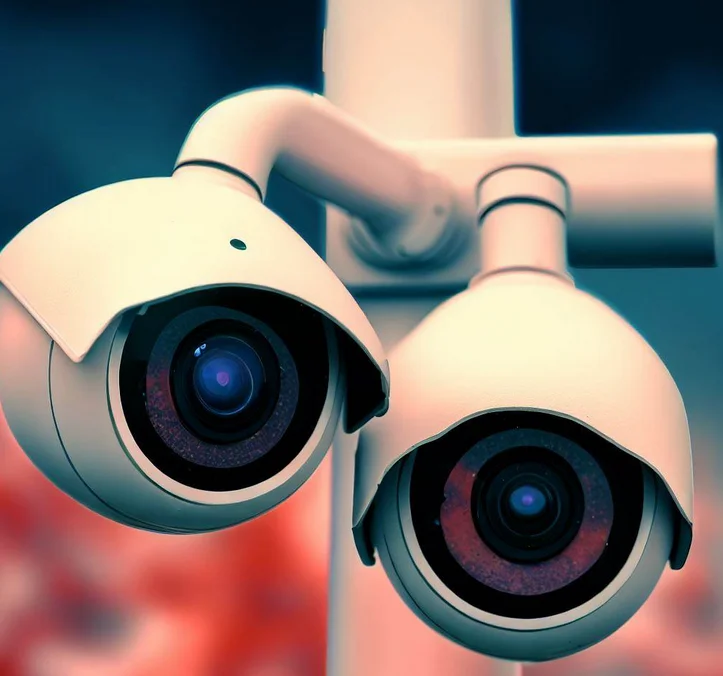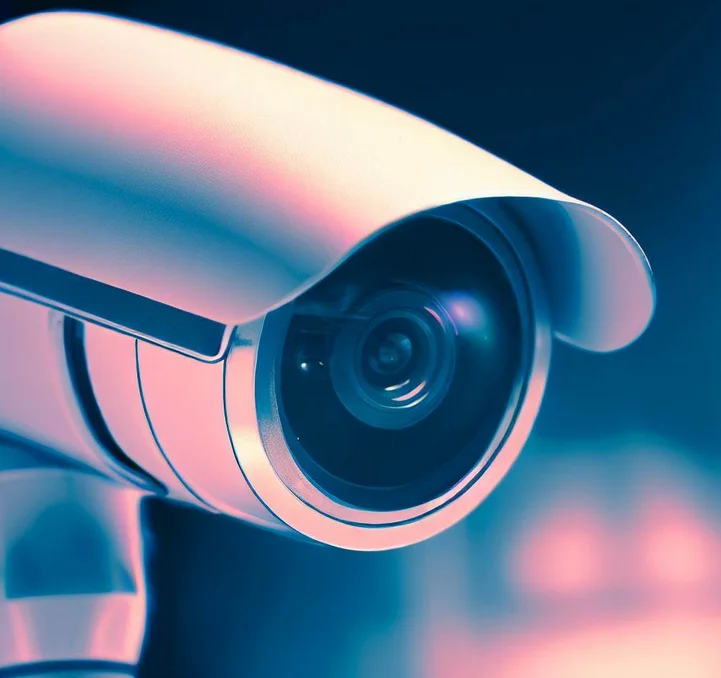When installing security cameras, nighttime image quality is a major consideration. Two main technologies exist for capturing images in the dark – infrared (IR) and starlight cameras. But what exactly is the difference, and when should you choose one over the other?
In this in-depth guide, we’ll compare starlight and IR surveillance cameras to help you decide which is better for your needs. We’ll cover:
- How they work to provide night vision
- Image quality differences
- Ideal use cases
- Cost considerations
- Top camera recommendations
By the end, you’ll understand the pros and cons of starlight vs IR and how to choose the right night vision option for your security system.
How Infrared Security Cameras Work
Infrared cameras have been around for decades and are a proven, affordable choice for home and business security systems.
They work by using infrared LEDs positioned around the camera lens. These LEDs emit infrared light that’s invisible to the human eye but can be detected by the camera sensor. When the camera switches to night mode in low light conditions, the IR LEDs activate and illuminate the scene with IR light.

One thing to note is that IR cameras will illuminate the area with a faint red glow visible to the human eye up close. This acts as a deterrent, signaling that surveillance is in place. But it also means IR cameras don’t work well for discreet or covert security set-ups.
Overall, infrared technology provides an affordable and proven method for basic night vision using the camera’s own IR illumination source. But it lacks the ability to capture color and details at night.
How Starlight Security Cameras Work
Starlight cameras take a different approach to low-light imaging. Instead of using IR LEDs and filtering out visible light, they are designed to maximize and enhance any available ambient light in a scene.
Starlight cameras use larger, more sensitive imaging sensors than standard security cameras. As sensor size increases, the camera becomes more capable of capturing enough light to generate a quality image even in dark conditions.
They also typically have a wide aperture, meaning a wider lens opening to collect more light. And the shutter speed can be slowed down to allow longer exposure times. Powerful software algorithms run real-time noise reduction to cut down on pixel noise and boost signal quality.

Starlight cameras excel at providing vibrant color video, rich details, and long viewing distances even with only minimal ambient lighting available. The trade-off is they are unable to see in complete darkness like IR cameras.
Image Quality Comparison
The core difference between the two technologies comes down to image quality, especially at night.
Infrared cameras produce black-and-white video and images at night. They also have a more limited viewing range dependent on the IR illumination, usually 30-100 feet depending on camera specs. With IR cameras, facial details, clothing colors, text, and other fine details are hard to make out from a distance or in dark areas without IR lighting.
Starlight cameras provide full color imaging and excel at capturing details like faces, license plate numbers, signs, and text even from relatively far distances. For example, 150 feet away faces might appear indecipherable from an IR camera but clearly recognizable with a starlight camera. The colors and finer details starlight cameras provide give better evidentiary value.
Keep in mind starlight cameras may still shift to black-and-white if there is not enough light to generate color video. But even the grayscale footage will show more discernible details than IR cameras in these extreme low-light conditions. Overall, starlight cams provide superior clarity and quality for nighttime surveillance applications where details are important.
Ideal Use Cases
Given the advantages and limitations of each technology, certain security camera applications tend to benefit more from IR or starlight capabilities.
Infrared cameras are the preferred choice when:
Night vision is needed for completely dark areas without existing lighting. IR illumination allows the camera to see even in pitch blackness.
Viewing distances exceed 100 feet. IR illumination provides farther viewing distances compared to starlight sensitivity alone.
Budget is a major constraint. IR cameras are significantly cheaper than starlight.
Covert cameras are needed. IR can provide night vision without visible light sources that might alert subjects.
Starlight cameras offer the most benefits when:
Color night vision is required to capture details like clothing, vehicle colors, signage, etc.
Light sources like streetlights or building lights provide some minimum illumination at night. Starlight cameras excel in low-light versus fully dark.
Long viewing distances are needed but external IR lighting is not an option. Starlight can see 100 feet or more in some cases without supplements.
 High-quality evidentiary video footage must be captured 24/7. Starlight technology provides crystal clear imaging day and night.
High-quality evidentiary video footage must be captured 24/7. Starlight technology provides crystal clear imaging day and night.
The security area has large open spaces that are difficult to illuminate externally. Starlight sensitivity can cover larger dark areas.
As you can see, there is overlap in the ideal uses, and both options can be effective for nighttime surveillance. Consider the specific lighting conditions, distance, and image detail needs to choose the best solution.
Cost Considerations
A quick look at security camera prices shows that starlight cameras come at a premium cost compared to IR models. There are two main reasons:
Advanced imaging sensors – The larger, higher-resolution sensors required for starlight imaging are more expensive. So the core camera hardware costs more.
Software processing – Heavy-duty algorithms process the video in real-time to maximize quality. This additional computing power adds cost.
Here are some sample camera prices to illustrate the difference:
1080p IR Bullet Camera – $80-$120
1080p Starlight Bullet Camera – $160-$350
4MP IR Bullet Camera – $100-$180
4MP Starlight Bullet Camera – $280-$500
You’re generally looking at 2x-5x the cost for a comparable starlight model over an IR camera. The investment is worth it for many users given the performance advantages, but tight security budgets may make IR a better fit.
Also keep in mind that with IR cameras, you may need to purchase supplementary lighting to maximize night vision capabilities and viewing distances. So the total system cost difference narrows when you account for additional IR illumination equipment with standard IR cameras.
Best Starlight and IR Cameras
Now that we’ve compared the two technologies in-depth, let’s look at some top-rated camera options in each category.
Best Starlight Cameras:
Reolink 4MP Super HD Starlight PoE Dome Camera
With 4 megapixel resolution and a large 1/2″ CMOS sensor, this camera delivers stunning low-light video. The f1.0 aperture allows 4x more light capture than a standard lens. It maintains full color video down to .01 lux illumination levels. This all amounts to unparalleled image clarity at night.
Hikvision 3MP Varifocal Outdoor Starlight Bullet Camera
Featuring a motorized varifocal lens with 3-9mm range, this adjustable Hikvision starlight camera can capture a wide 90° to 32° field of view. The larger 1/2” progressive scan CMOS sensor provides exceptional light sensitivity and noise reduction. It delivers color images in dim lighting as low as 0.005 Lux.
Dahua 4MP Starlight HDCVI IR Bullet Camera
This affordable 4MP camera uses Dahua’s Starlight+ technology to provide the best of both worlds – vivid color night vision down to 0.005 lux and IR illumination up to 115 feet. It switches to infrared mode in zero-light environments. The end result is stellar imaging 24/7.
Best Infrared Cameras:
SV3C 1080p HD Wireless IR Security Camera
For a budget-friendly option, the SV3C 1080p camera delivers sharp video and images day and night. It has built-in IR LEDs with 100 feet of night vision range. Easy wireless installation and a wide 110° viewing angle make this a great starter choice.
Lorex 2K (4MP) Infrared Bullet Security Camera
Lorex’s 2K infrared camera captures twice the detail of 1080p models. The 4MP super HD resolution paired with the 1/2″ CMOS sensor provides outstanding clarity in all conditions. It has an IP67 weatherproof rating for outdoor installation and 100 feet of night vision.
Zosi 4MP PoE IR Dome Camera
This Zosi dome camera uses dark fighter sensor technology to provide enhanced low-light capabilities and noise reduction. It has integrated IR LEDs with 165 feet of night vision range.
